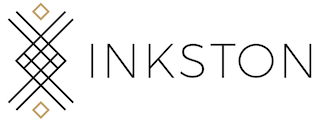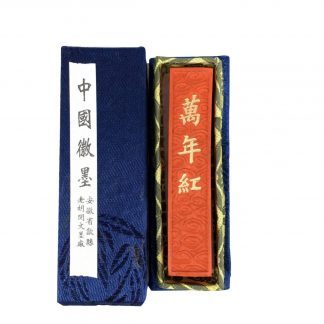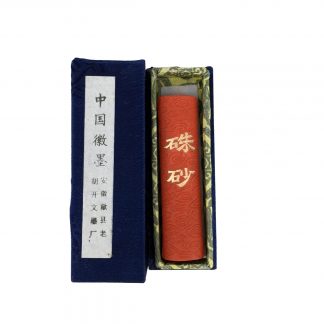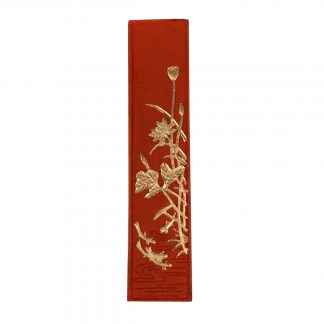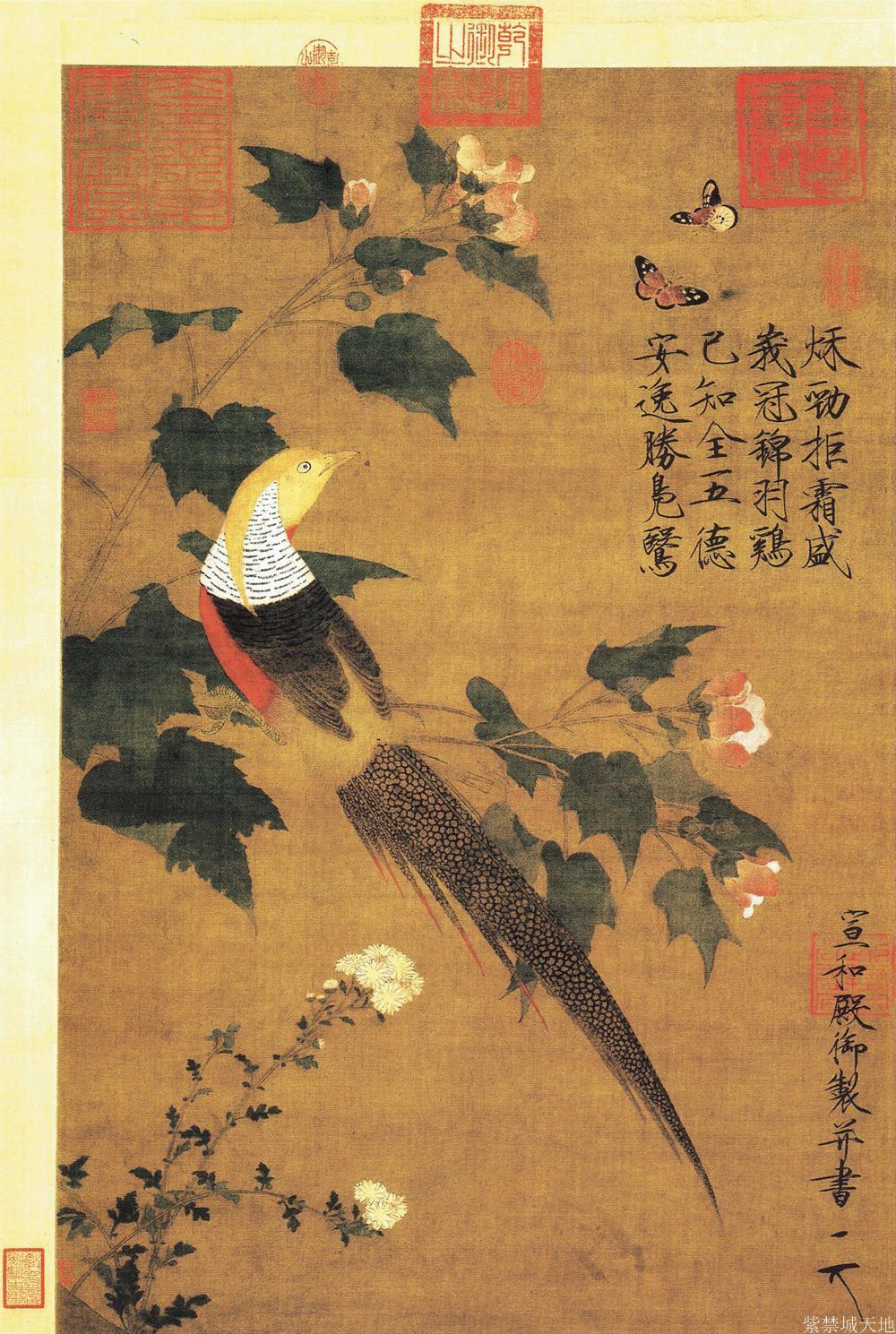
Flower and Bird are always popular subjects for Chinese painting students. In our previous posts, we have introduced quite a lot of tips regarding how to paint flowers. In today’s post, we will follow Chinese artist Wu Peng 吴蓬 to learn bird painting techniques from Mustard Seed Garden.
Cover Picture
Golden Pheasant and Cotton Rose Flowers by Emperor Huizong of Song (7June 1082 – 4 June 1135), personal name 赵佶 Zhao Ji. Emperor Huizong is so famous for his flower and bird paintings that no one can ignore him when talking about Chinese art history. Inkston once published one post about him. If you want to know more, please click and read: Emperor Huizong of Song and His Work of Art.
Materials Preparation
Xuan Paper: Expert Flower and Bird Xuan Paper, Extra Fine Flower and Bird Xuan Paper.
* We recommend you to learn painting with raw Xuan papers. If you find it is difficult to paint with raw paper, you can also try to start with half-cooked Xuan paper. However, please never try to paint on newspaper when you are just a beginner. Knowing well how the Xuan paper works with ink and brush is essential for you to learn Chinese painting.
-
INKSTON Expert Flower/ Bird Xuan Paper
 INKSTON Expert Flower/ Bird 45 Xuan paper contains 33-38% Pteroceltis Tatarinowii tree bark, it is untreated/unsized (raw/uncooked in Chinese) and has a tiny portion of added calcium, which makes the paper very sensitive to express different kinds of inks. Therefore, the paper is specially suitable for paintings of flowers and birds. To make the Expert grade Xuan paper the fibres are steamed/boiled…$23.83 – $238.38
INKSTON Expert Flower/ Bird 45 Xuan paper contains 33-38% Pteroceltis Tatarinowii tree bark, it is untreated/unsized (raw/uncooked in Chinese) and has a tiny portion of added calcium, which makes the paper very sensitive to express different kinds of inks. Therefore, the paper is specially suitable for paintings of flowers and birds. To make the Expert grade Xuan paper the fibres are steamed/boiled…$23.83 – $238.38
Brand: inkston
Maker: Inkston
Materials: 棉料 Mian Liao
Recommend to: Advanced Level, Beginners, Medium Level, Professionals
Suitable for: 花鸟画 Flower and Bird painting
INKSTON Expert Flower/ Bird Xuan Paper
$23.83 – $238.38 Choose -
INKSTON Extra Fine Flower/ Bird Xuan Paper




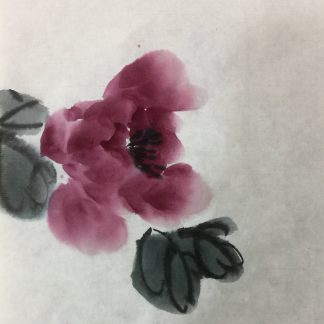
Brand: inkston
Materials: 棉料 Mian Liao
Suitable for: 花鸟画 Flower and Bird painting




INKSTON Extra Fine Flower/ Bird Xuan Paper
$32.03 – $226.23 Choose
For professionals and people who would like to go for the top Xuan papers to reach the best painting effects, we recommend Inkston Perfect Series Xuan Papers.
-
INKSTON Perfect 70 Xuan Paper


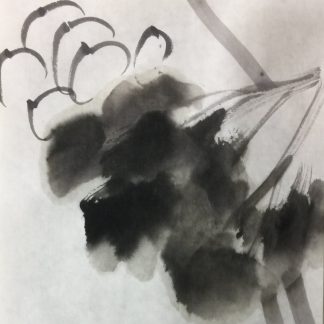
Brand: inkston
Materials: 净皮 Jing Pi


INKSTON Perfect 70 Xuan Paper
$46.05 – $316.04 Choose -
INKSTON Perfect 80 Xuan Paper


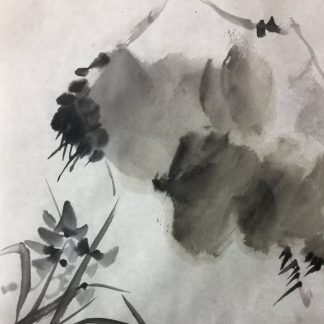
Brand: inkston
Maker: Inkston
Materials: 特种净皮 Te Zhong Jing Pi
Recommend to: Advanced Level, Beginners, Medium Level, Professionals
Suitable for: Calligraphy, Chinese Painting


INKSTON Perfect 80 Xuan Paper
$63.53 – $349.39 Choose -
INKSTON Perfect 85 Xuan Paper


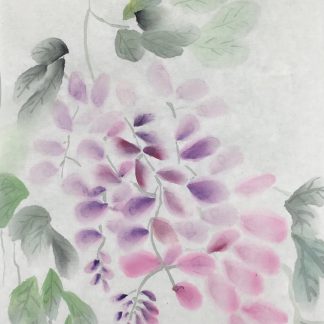
Brand: inkston
Maker: Inkston
Materials: 特种净皮 Te Zhong Jing Pi
Suitable for: Calligraphy, Chinese Painting


INKSTON Perfect 85 Xuan Paper
$109.58 – $744.83 Choose
Brush: 0903Ws Gongbi detail “Flower brush”, 0903WsWl Traditional White Cloud Brush, 0901WsWl Traditional White Cloud Brush, 0200WsWl large Combination brush. If necessary, you can also consider to keep a set of Gongbi detail LangHao wolf brushes.
Small White Cloud 0903WsWl brush works fine for all level painters. This brush is made with very fine natural animal hairs. If you feel like, you can also prepare one more 0903Ws Flower Brush for small tiny details. The 0903Ws brush is especially helpful for painting details such as beaks, small hairs, tiny feet etc.
-
Inkston 0200WsWl 精品兼毫 Extra-large Fine Jian Hao Combination Brush




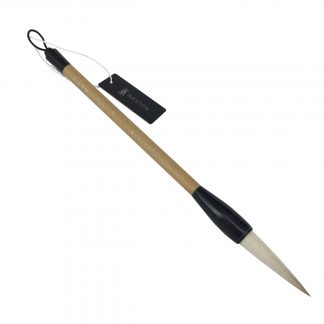
Brand: inkston
Maker: Xu Shi Chun
Materials: JianHao hair
Packaging: silk sleeve
Suitable for: 写意画 Freehand Painting, 花鸟画 Flower and Bird painting, 草书 CaoShu "grass" Cursive Script calligraphy
Brush Hair Size: 1.4 * 6.2 cm




Inkston 0200WsWl 精品兼毫 Extra-large Fine Jian Hao Combination Brush
Sale! $31.76 (USD) Add -
Inkston 0901WsWl 古法大白云 GuFa Da BaiYun “Traditional White Cloud Large” 兼毫 Jian Hao Combination Brush




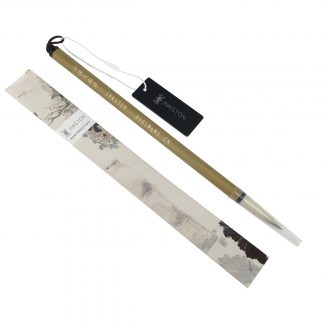
Brand: inkston
Maker: Xu Shi Chun
Materials: JianHao hair
Packaging: silk sleeve
Recommend to: Advanced Level, Beginners, Medium Level, Professionals
Suitable for: Calligraphy, 写意画 Freehand Painting, 楷书 KaiShu Regular Script calligraphy, 花鸟画 Flower and Bird painting, 草书 CaoShu "grass" Cursive Script calligraphy
Brush Hair Size: 4 * 0.9 cm
Product Size: 28 × 1.1 × 1.1 cm
Product Weight: 22.3
Shipping size: 35 × 3 × 3 cm




Inkston 0901WsWl 古法大白云 GuFa Da BaiYun “Traditional White Cloud Large” 兼毫 Jian Hao Combination Brush
$28.76 (USD) Add -
Inkston 0903Ws 花枝俏 “Flower Brush” Extra Fine Detail LangHao Wolf brush




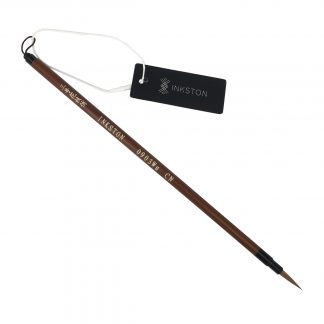
Brand: inkston
Maker: Xu Shi Chun
Materials: Bamboo, Weasel Hair
Packaging: silk sleeve
Recommend to: Advanced Level, Medium Level, Professionals
Suitable for: 1 – 1.5 cm diameter calligraphy, 工笔画 Gongbi Painting, 花鸟画 Flower and Bird painting
Brush Hair Size: 0.35 * 1.9 cm
Product Size: 24.5 × 0.7 × 0.7 cm
Product Weight: 5.2
Shipping size: 27.5 × 5 × 0.7 cm




Inkston 0903Ws 花枝俏 “Flower Brush” Extra Fine Detail LangHao Wolf brush
$10.35 (USD) Add -
Inkston 0903WsWl 古法小白云 GuFa Xiao BaiYun “Traditional White Cloud Small” 兼毫 Jian Hao Combination Brush




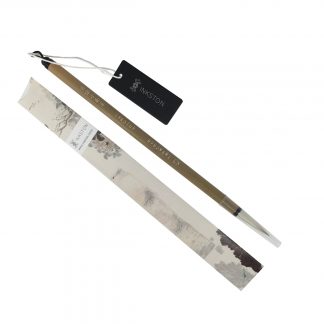
Brand: inkston
Maker: Xu Shi Chun
Materials: Bamboo, JianHao hair
Packaging: silk sleeve
Recommend to: Advanced Level, Beginners, Medium Level, Professionals
Suitable for: Calligraphy, Chinese Painting, 写意画 Freehand Painting, 楷书 KaiShu Regular Script calligraphy, 花鸟画 Flower and Bird painting, 草书 CaoShu "grass" Cursive Script calligraphy
Brush Hair Size: 3.3 * 0.7 cm
Product Size: 26.2 × 0.9 × 0.9 cm
Product Weight: 16
Shipping size: 26.5 × 3 × 2 cm




Inkston 0903WsWl 古法小白云 GuFa Xiao BaiYun “Traditional White Cloud Small” 兼毫 Jian Hao Combination Brush
$22.95 (USD) Add
Ink: If you are experienced with bird paintings, we would recommend you to try fine pine soot ink which produces fine deep black colour and amplifies the fine details of hairs. For beginners when you are not very familiar with traditional Chinese handmade find inks, we would recommend you to start with some very affordable handmade pine soot inksticks such as Yellow Mountain Pine Soot Inkstick which is a very classic student pine soot inkstick. We like using black ink and cinnabar (or cinnabar red) a lot to painting birds. Have these two inks ready beforehand is very helpful. And deep indigo is also widely used when painting bird, especially it is a classic colour to paint crane’s long beaks.
-
特级花青膏 Extra Fine Indigo Plant Color 5g


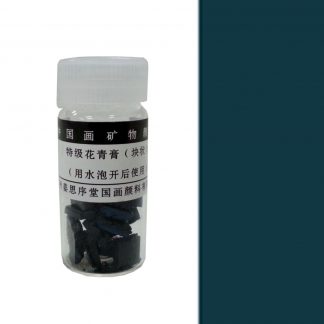
Brand: Jiang SiXu Tang 姜思序堂
Colour: Indigo 花青
Materials: Indigo
Packaging: glass bottle
Recommend to: Advanced Level, Beginners, Medium Level, Professionals
Suitable for: Chinese Painting
Product Weight: 5
Shipping size: 2 × 2 × 5 cm


特级花青膏 Extra Fine Indigo Plant Color 5g
$17.41 (USD) Add -
纯松烟(黄山松烟)Yellow Mountain (ancient recipe) Pine Soot Black Inkstick


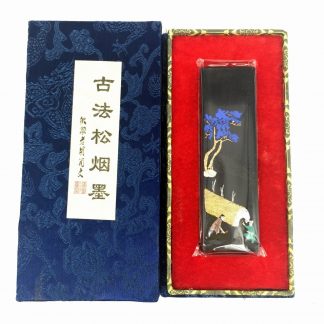
Brand: 老胡開文墨莊 Old Hu Kai Wen Ink Workshop
Materials: 松烟 Pine Soot
Packaging: Silk-Lined Cardboard Box
Recommend to: Advanced Level, Medium Level, Professionals
Suitable for: Calligraphy, Chinese Painting
Product Size: 11 × 3.5 × 1.5 cm
Product Weight: 65


纯松烟(黄山松烟)Yellow Mountain (ancient recipe) Pine Soot Black Inkstick
$29.04 (USD) Add -
苍炱 Cang Tai Pine Soot Black Inkstick


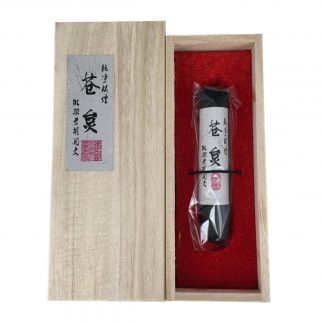
Brand: 老胡開文墨莊 Old Hu Kai Wen Ink Workshop
Materials: 松烟 Pine Soot
Packaging: Wooden Box
Recommend to: Advanced Level, Medium Level, Professionals
Suitable for: Calligraphy, Chinese Painting
Product Size: 10 × 2 × 2 cm
Product Weight: 32
Shipping size: 17.2 × 7 × 3.8 cm


苍炱 Cang Tai Pine Soot Black Inkstick
$41.58 (USD) Add -
黄山松烟 Yellow Mountain Pine Soot Black Inkstick


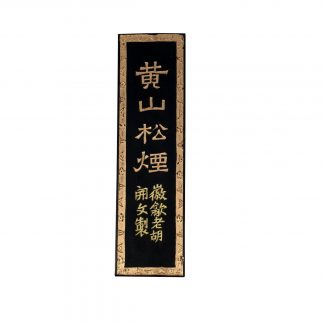
Size: M, S


黄山松烟 Yellow Mountain Pine Soot Black Inkstick
$12.70 – $19.66 Choose
Techniques to Review:
- Five Colours of Black Ink, see how Chinese artist Wang ZiRang talks about ‘five colours of ink’ 墨分五彩. French artist Eric Marié also made some very good suggestion on how to learn this important Chinese painting technique: five grades of ink.
- Learn how to use brush to ‘break strokes’ to depict special tiny detailed hairs. For example, use 0903Ws brush and paint with dry (light or dark) black ink. Lightly apply the dry brush on paper to paint some tiny hairs.
- We also highly recommend you to practice some Chinese regular script. This helps very much to control your brush freely. For example, Yan ZhenQin and Zhao MengFu are the two classic calligraphers whom we refer to mostly for regular script.
-
Laws Divine and Human – Zhao MengFu Small Regular Calligraphy


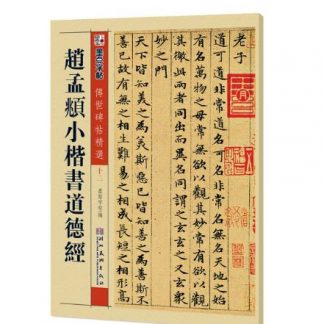
Brand: inkston
Suitable for: Calligraphy, Chinese Painting
Product Size: 25.4 × 18 × 0.5 cm
Product Weight: 141


Laws Divine and Human – Zhao MengFu Small Regular Calligraphy
$8.74 (USD) Add -
Red Star 经典楷笔 Classic Calligraphy Lang Hao Wolf Brush M


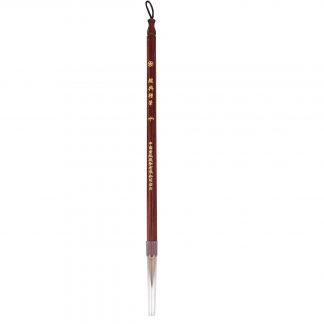
Brand: Red Star 红星
Materials: Weasel Hair, Wood
Recommend to: Advanced Level, Beginners, Medium Level
Suitable for: Chinese Painting, 中楷 3-7 cm calligraphy, 楷书 KaiShu Regular Script calligraphy, 草书 CaoShu "grass" Cursive Script calligraphy, 行书 xíngshū semi-cursive script
Brush Hair Size: 0.6 * 2.5 cm
Product Size: 23 × 0.8 × 0.8 cm
Product Weight: 11.95
Shipping size: 35 × 5 × 5 cm


Red Star 经典楷笔 Classic Calligraphy Lang Hao Wolf Brush M
$28.13 (USD) Add
- Lastly but almost the most importantly, observe birds by looking at various birds photos or spend one weekend with family and friends in village to look how birds enjoy their lives. If possible, bring your sketch book to make some rough sketches of birds, and/ or write down some of your observations.
Key points to keep in mind
- Generally speaking, if the bird has a short beak then it would probably have long tail, and vice versa;
- Try not to paint bird bigger than their real size, unless it is really needed; otherwise you might find the bird turns into a goose.
- When painting feet, try to paint it like you write Chinese regular script if you are a Chinese painting beginner.
- Many birds have some reddish feather on head. Use cinnabar or cinnabar red instead of red pigments since cinnabar/ cinnabar red matches perfectly with pine soot black colour.
- When ink is try, the colour is lighter than when it is wet. Therefore, you might need to add extra black ink to the areas which need to be dark black when dry.
Bird Painting Instructions:
Step 1: eye. Don’t paint it as a circle. The eye will help position the whole picture. To be more specific, you can start with the upper eye lid.
Step 2: position beak according to the position of eye. Similar to painting eye, start with upper part of the beak. Remember to add small short hairs on the upper beak if the type of the bird you paint has such feature. Lower part of the beak normally has lighter-coloured tiny hairs. Nevertheless, this is not a strict rule. The purpose is to make the beak fine and well-structured.
Step 3: upper head.
Step 4: lower part of head and neck.
*Tip: make balance of strong and light black ink. refer to 5 blackness.
Step 5: wings. Paint short feathers first and then add long hard feathers.
Step 6: tail. Paint with light dry ink to depict the details of tail. Then use strong black ink to paint long tails. Start with strong black ink but use light black ink for details.
Step 7: feet. Paint feet like you do regular script if you are a beginner; otherwise, please do not restrain your creativity.
Step 8: standpoint. This mostly means tree branch or anything which the bird is resting on.
*Tip: if the brush is dry then try to paint slowly. This will create a very fine effect and pass strength smoothly to paper.
Video
Below is artist Wu Peng’s tutorial video clip which has demonstrated how to paint birds of different gestures. We have listed specially locations of different subjects and have also made some short notes of the video clip to help you locate better when watching it.
(21:40 – 26:00): how to paint feathers?
Please use small detailed hair brush, such as 0903ws pure weasel brush. Follow the same steps of bird painting: eye, beak, hairs near eyes, upper part of head, lower part of head, neck… and end up with feet. Bear in mind: keep light ink, deep black ink well balanced. For beginners, practice painting fine feathers is very useful because this will further help you paint other styles of Chinese painting.
(26:57 – 35:45): How to paint crane?
Use big paper and big brush. Brush: long pointed brush. For example Red Star Long Pointed brush. Use dry ink to paint eye. Be aware not to paint it round. When painting neck, not to paint the line too straight, instead, paint the line like they are a string of small dots. When painting feet, remember the techniques you have learned about painting bamboos. They are very similar.
The red head of the crane is cinnabar red. You can try it with cinnabar inkstick mixed it with red colour. Or you can use cinnabar red paint. The beaks are colored in hua qing. You can add a bit yellow colour un the bottom of the crane eye. This colour can help balance
(35:50 – 38:35): How to paint egret?
Egret is smaller than crane. Please use big paper and white cloud brush 0901WsWl. Start with eye, then beak, head, neck, etc, and end with feet.
(38:40 – ): How to paint wild goose?
Wild goose is a very beautiful bird to paint. Paint with 0901WsWl white cloud brush, Extra Fine Flower/ Bird Xuan paper or Expert Flower/ Bird Xuan Paper.
Mustard Seed Garden Video tutorial by Chinese artist Wu Peng 吴蓬, who was born in 1941 and currently researcher of Shanghai Calligraphy and Painting Institute. He is especially famous for calligraphy (Oracle) and flower paintings.
【芥子园画谱技法讲座】 28(三)花卉翎毛(09 10)翎毛
Pictures
Related pictures from the Mustard Seed Garden book volume 3, page 151 – 164.
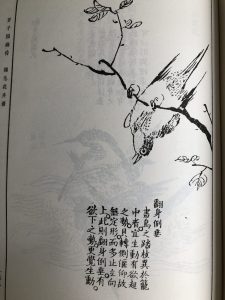

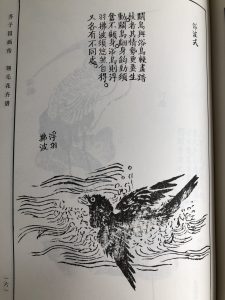

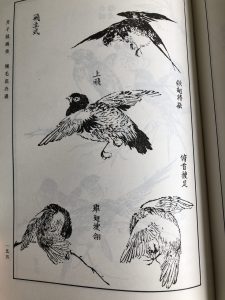

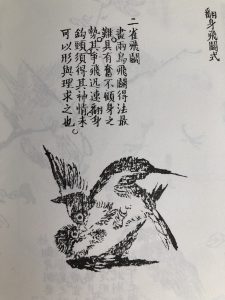

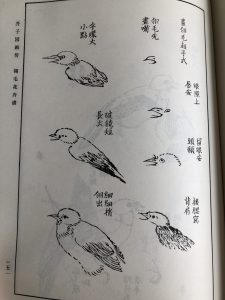

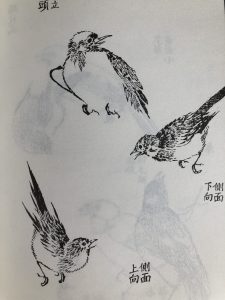

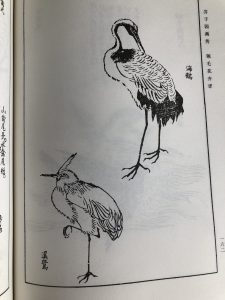

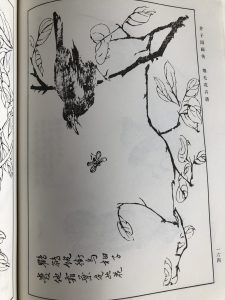

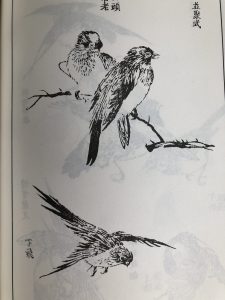

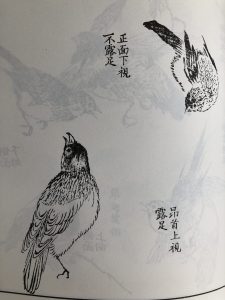

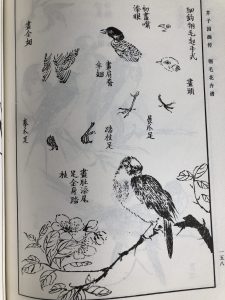

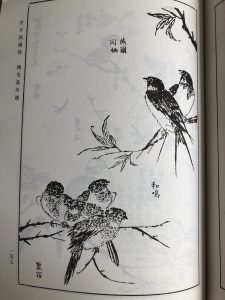

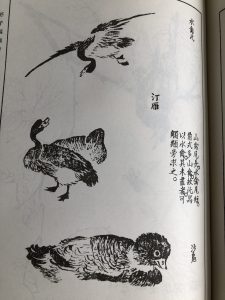

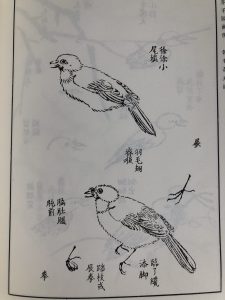

Materials
-
Inkston 0200WsWl 精品兼毫 Extra-large Fine Jian Hao Combination Brush





Brand: inkston
Maker: Xu Shi Chun
Materials: JianHao hair
Packaging: silk sleeve
Suitable for: 写意画 Freehand Painting, 花鸟画 Flower and Bird painting, 草书 CaoShu "grass" Cursive Script calligraphy
Brush Hair Size: 1.4 * 6.2 cm




Inkston 0200WsWl 精品兼毫 Extra-large Fine Jian Hao Combination Brush
Sale! $31.76 (USD) Add -
Inkston 0305WsWl 北海云雾 Beihai Yunwu “North lake mist” Extra-large 兼毫 Jian Hao Combination Brush


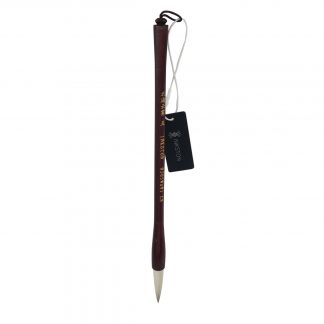
Brand: inkston
Maker: Xu Shi Chun
Materials: JianHao hair
Packaging: silk sleeve
Suitable for: 写意画 Freehand Painting, 花鸟画 Flower and Bird painting, 草书 CaoShu "grass" Cursive Script calligraphy, 行书 xíngshū semi-cursive script
Shipping size: 30.5 × 1.4 × 1.4 cm
Shipping weight: 50 g


Inkston 0305WsWl 北海云雾 Beihai Yunwu “North lake mist” Extra-large 兼毫 Jian Hao Combination Brush
$19.65 (USD) Add -
Inkston 0403Ws 北尾狼毫联笔 Beiwei LangHao Wolf brush


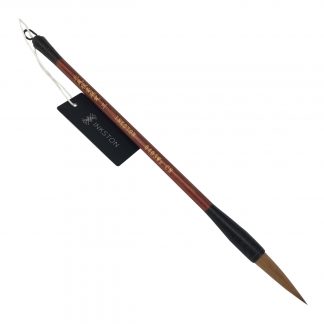
Brand: inkston
Maker: Xu Shi Chun
Materials: Weasel Hair, Wood
Packaging: silk sleeve
Suitable for: 写意画 Freehand Painting, 山水画 ShanShui Landscape Painting, 楷书 KaiShu Regular Script calligraphy, 花鸟画 Flower and Bird painting, 草书 CaoShu "grass" Cursive Script calligraphy, 行书 xíngshū semi-cursive script
Brush Hair Size: 1 * 4.4 cm
Shipping size: 30.5 × 1.3 × 1.3 cm
Shipping weight: 31.5 g


Inkston 0403Ws 北尾狼毫联笔 Beiwei LangHao Wolf brush
$37.38 (USD) Add -
Inkston 0503M 貂毫长锋 Diao Hao Long Pointed Marten Brush


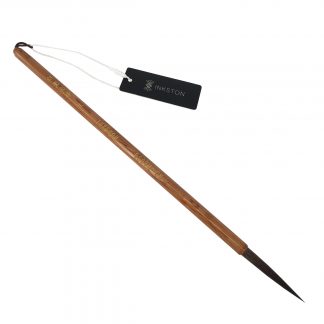
Brand: inkston
Maker: Xu Shi Chun
Materials: Marten Hair
Packaging: silk sleeve
Recommend to: Advanced Level, Beginners, Medium Level
Suitable for: Calligraphy, 山水画 ShanShui Landscape Painting, 楷书 KaiShu Regular Script calligraphy, 草书 CaoShu "grass" Cursive Script calligraphy, 行书 xíngshū semi-cursive script
Brush Hair Size: 4.7 * 0.7 cm
Product Size: 30.5 × 1 × 1 cm
Shipping weight: 50 g


Inkston 0503M 貂毫长锋 Diao Hao Long Pointed Marten Brush
$30.28 (USD) Add -
Inkston 0601Ws 经典狼毫大 Large Classic Lang Hao Wolf Brush


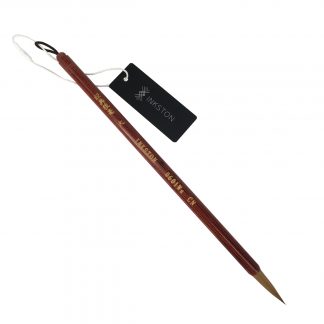
Brand: inkston
Maker: Xu Shi Chun
Materials: Weasel Hair, Wood
Packaging: silk sleeve
Suitable for: 中楷 3-7 cm calligraphy, 大楷 3-9 cm calligraphy, 楷书 KaiShu Regular Script calligraphy, 花鸟画 Flower and Bird painting
Brush Hair Size: 2.8 * 0.7 cm
Product Size: 25 × 0.9 × 0.9 cm


Inkston 0601Ws 经典狼毫大 Large Classic Lang Hao Wolf Brush
$29.33 (USD) Add -
Inkston 0602Ws 经典狼毫中 Medium Classic Lang Hao Wolf Brush


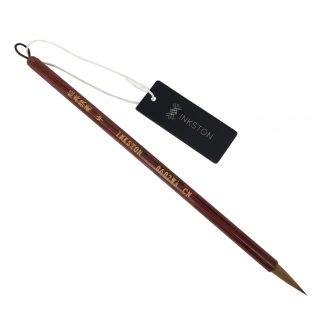
Brand: inkston
Maker: Xu Shi Chun
Materials: Weasel Hair, Wood
Packaging: silk sleeve
Recommend to: Advanced Level, Beginners, Medium Level, Professionals
Suitable for: 中楷 3-7 cm calligraphy, 山水画 ShanShui Landscape Painting, 工笔画 Gongbi Painting, 楷书 KaiShu Regular Script calligraphy, 花鸟画 Flower and Bird painting, 行书 xíngshū semi-cursive script
Brush Hair Size: 2.5 * 0.6 cm
Product Size: 24.5 × 0.8 × 0.8 cm


Inkston 0602Ws 经典狼毫中 Medium Classic Lang Hao Wolf Brush
$27.88 (USD) Add -
Inkston 0603Ws 经典狼毫小 Small Classic Lang Hao Wolf Brush


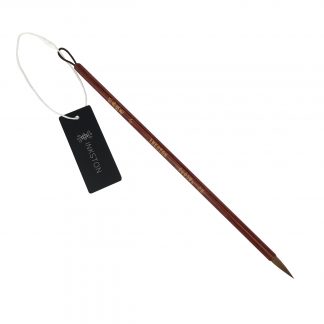
Brand: inkston
Maker: Xu Shi Chun
Materials: Weasel Hair, Wood
Packaging: silk sleeve
Recommend to: Advanced Level, Beginners, Medium Level, Professionals
Suitable for: 小楷 3 – 5 cm calligraphy, 工笔画 Gongbi Painting, 楷书 KaiShu Regular Script calligraphy, 花鸟画 Flower and Bird painting, 行书 xíngshū semi-cursive script
Brush Hair Size: 2.1 * 0.5 cm
Product Size: 24 × 0.65 × 0.65 cm


Inkston 0603Ws 经典狼毫小 Small Classic Lang Hao Wolf Brush
$25.70 (USD) Add -
Inkston 0700Ws 梅骨 Meigu Big 狼毫 Lang Hao Wolf brush


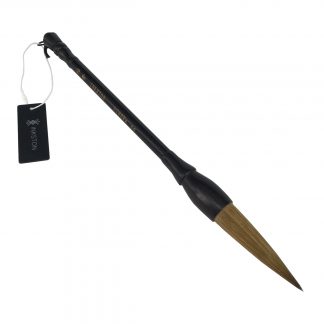
Brand: inkston
Maker: Xu Shi Chun
Materials: Solid Black Wood, Weasel Hair
Packaging: silk sleeve
Suitable for: Large Cursive Calligraphy, 山水画 ShanShui Landscape Painting
Brush Hair Size: 7.5 * 2 cm
Product Size: 36 × 2.5 × 2.5 cm
Shipping weight: 74 g


Inkston 0700Ws 梅骨 Meigu Big 狼毫 Lang Hao Wolf brush
$110.01 (USD) Add -
Inkston 0801SW 豹狼毫 Bao Lang Hao Large Leopard Wolf Brush (Squirrel/Weasel)


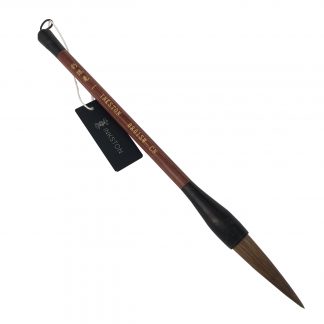
Brand: inkston
Maker: Xu Shi Chun
Materials: Weasel Hair, Wood
Packaging: silk sleeve
Recommend to: Advanced Level, Medium Level, Professionals
Suitable for: Calligraphy, Shi Lu 石鲁 Landscape Painting Style, 山水画 ShanShui Landscape Painting, 楷书 KaiShu Regular Script calligraphy, 花鸟画 Flower and Bird painting, 草书 CaoShu "grass" Cursive Script calligraphy, 行书 xíngshū semi-cursive script
Brush Hair Size: 6 * 1.5 cm
Product Size: 34 × 2 × 2 cm


Inkston 0801SW 豹狼毫 Bao Lang Hao Large Leopard Wolf Brush (Squirrel/Weasel)
$49.00 (USD) Add -
Inkston 0901WsWl 古法大白云 GuFa Da BaiYun “Traditional White Cloud Large” 兼毫 Jian Hao Combination Brush





Brand: inkston
Maker: Xu Shi Chun
Materials: JianHao hair
Packaging: silk sleeve
Recommend to: Advanced Level, Beginners, Medium Level, Professionals
Suitable for: Calligraphy, 写意画 Freehand Painting, 楷书 KaiShu Regular Script calligraphy, 花鸟画 Flower and Bird painting, 草书 CaoShu "grass" Cursive Script calligraphy
Brush Hair Size: 4 * 0.9 cm
Product Size: 28 × 1.1 × 1.1 cm
Product Weight: 22.3
Shipping size: 35 × 3 × 3 cm




Inkston 0901WsWl 古法大白云 GuFa Da BaiYun “Traditional White Cloud Large” 兼毫 Jian Hao Combination Brush
$28.76 (USD) Add -
Inkston 0902WsWl 古法中白云 GuFa Zhong BaiYun “Traditional Small White Cloud Medium” 兼毫 Jian Hao Combination Brush


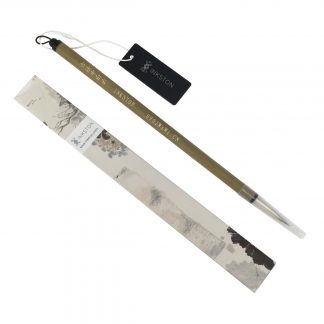
Brand: inkston
Maker: Xu Shi Chun
Materials: Bamboo, JianHao hair
Packaging: silk sleeve
Recommend to: Advanced Level, Beginners, Medium Level, Professionals
Suitable for: Calligraphy, 写意画 Freehand Painting, 楷书 KaiShu Regular Script calligraphy, 花鸟画 Flower and Bird painting, 草书 CaoShu "grass" Cursive Script calligraphy
Brush Hair Size: 3.6 * 0.8 cm
Product Size: 28 × 1 × 1 cm
Product Weight: 13
Shipping size: 35 × 2 × 2 cm


Inkston 0902WsWl 古法中白云 GuFa Zhong BaiYun “Traditional Small White Cloud Medium” 兼毫 Jian Hao Combination Brush
$25.99 (USD) Add -
Inkston 0903Ws 花枝俏 “Flower Brush” Extra Fine Detail LangHao Wolf brush





Brand: inkston
Maker: Xu Shi Chun
Materials: Bamboo, Weasel Hair
Packaging: silk sleeve
Recommend to: Advanced Level, Medium Level, Professionals
Suitable for: 1 – 1.5 cm diameter calligraphy, 工笔画 Gongbi Painting, 花鸟画 Flower and Bird painting
Brush Hair Size: 0.35 * 1.9 cm
Product Size: 24.5 × 0.7 × 0.7 cm
Product Weight: 5.2
Shipping size: 27.5 × 5 × 0.7 cm




Inkston 0903Ws 花枝俏 “Flower Brush” Extra Fine Detail LangHao Wolf brush
$10.35 (USD) Add -
Inkston 0903WsWl 古法小白云 GuFa Xiao BaiYun “Traditional White Cloud Small” 兼毫 Jian Hao Combination Brush





Brand: inkston
Maker: Xu Shi Chun
Materials: Bamboo, JianHao hair
Packaging: silk sleeve
Recommend to: Advanced Level, Beginners, Medium Level, Professionals
Suitable for: Calligraphy, Chinese Painting, 写意画 Freehand Painting, 楷书 KaiShu Regular Script calligraphy, 花鸟画 Flower and Bird painting, 草书 CaoShu "grass" Cursive Script calligraphy
Brush Hair Size: 3.3 * 0.7 cm
Product Size: 26.2 × 0.9 × 0.9 cm
Product Weight: 16
Shipping size: 26.5 × 3 × 2 cm




Inkston 0903WsWl 古法小白云 GuFa Xiao BaiYun “Traditional White Cloud Small” 兼毫 Jian Hao Combination Brush
$22.95 (USD) Add -
INKSTON Expert Flower/ Bird Xuan Paper



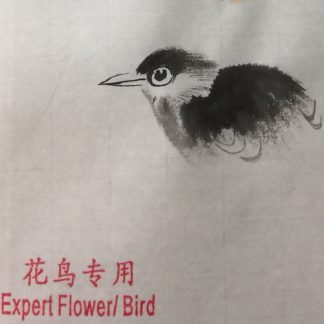
Brand: inkston
Maker: Inkston
Materials: 棉料 Mian Liao
Recommend to: Advanced Level, Beginners, Medium Level, Professionals
Suitable for: 花鸟画 Flower and Bird painting



INKSTON Expert Flower/ Bird Xuan Paper
$23.83 – $238.38 Choose -
INKSTON Extra Fine Flower/ Bird Xuan Paper





Brand: inkston
Materials: 棉料 Mian Liao
Suitable for: 花鸟画 Flower and Bird painting




INKSTON Extra Fine Flower/ Bird Xuan Paper
$32.03 – $226.23 Choose -
INKSTON Extra Fine Landscape Xuan Paper


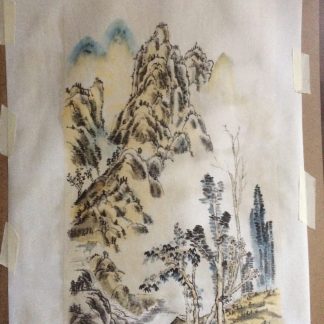
Brand: inkston
Materials: 净皮 Jing Pi
Suitable for: 山水画 ShanShui Landscape Painting


INKSTON Extra Fine Landscape Xuan Paper
$34.94 – $268.39 Choose -
Inkston Initial Brush Set for Sumi E Beginners


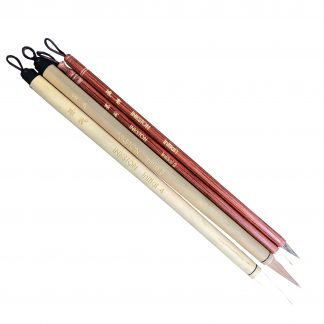
Brand: inkston
Maker: Xu Shi Chun
Materials: Bamboo, Horse Hair, Weasel Hair, Wood, Wool
Recommend to: Beginners
Suitable for: Calligraphy, Chinese Painting, 工笔画 Gongbi Painting, 花鸟画 Flower and Bird painting


Inkston Initial Brush Set for Sumi E Beginners
$32.91 (USD) Add -
Inkston WsWl 古法白云 GuFa BaiYun “Traditional White Cloud ” 兼毫 Jian Hao Combination Brush Set


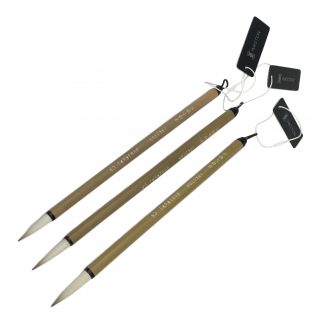
$77.69$66.04
Brand: inkston
Maker: Xu Shi Chun
Materials: Bamboo, JianHao hair
Packaging: silk sleeve
Recommend to: Advanced Level, Beginners, Medium Level, Professionals
Suitable for: Calligraphy, Chinese Painting, 写意画 Freehand Painting, 楷书 KaiShu Regular Script calligraphy, 花鸟画 Flower and Bird painting, 草书 CaoShu "grass" Cursive Script calligraphy
Brush Hair Size: 4 * 0.9 cm, 3.6 * 0.8 cm, 3.3 * 0.7 cm
Product Size: 28 x 1,1 x 1,1 cm, 28 x 1 x 1 cm, 26,2 x 0,9 x 0,9 cm
Product Weight: 16
Shipping size: 96.5 × 8 × 7 cm


Inkston WsWl 古法白云 GuFa BaiYun “Traditional White Cloud ” 兼毫 Jian Hao Combination Brush Set
-15%$77.69$66.04 Add to cart -
Inkston 经典狼毫 Classic Lang Hao “Wolf” Brush Set


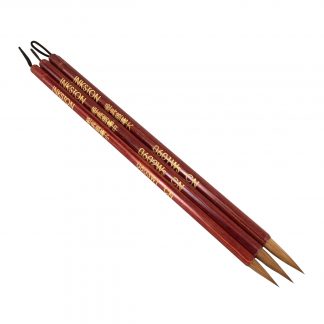
$82.89$66.31
Brand: inkston
Maker: Xu Shi Chun
Materials: Weasel Hair, Wood
Recommend to: Advanced Level, Beginners, Medium Level, Professionals
Suitable for: Calligraphy, Chinese Painting, 花鸟画 Flower and Bird painting


Inkston 经典狼毫 Classic Lang Hao “Wolf” Brush Set
-20%$82.89$66.31 Add to cart -
Red Star 一品灰貂(三) Extra Fine Hui Diao Brush #3


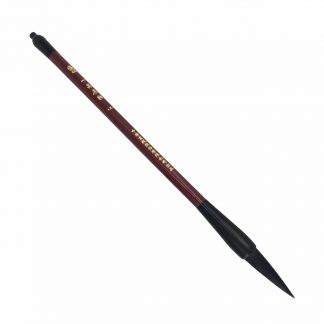
Brand: Red Star 红星
Materials: Marten Hair, Wood
Recommend to: Advanced Level, Beginners, Medium Level, Professionals
Suitable for: Birds, Calligraphy, Chinese Painting, Portrait, 写意画 Freehand Painting, 花鸟画 Flower and Bird painting, 草书 CaoShu "grass" Cursive Script calligraphy
Brush Hair Size: 4.1 * 1.1 cm
Product Size: 28 × 0.9 × 0.9 cm
Product Weight: 15
Shipping size: 35 × 5 × 5 cm


Red Star 一品灰貂(三) Extra Fine Hui Diao Brush #3
$26.54 (USD) Add -
Red Star 一品长锋 Extra Fine Chang Feng Wool Calligraphy and Painting Brush L


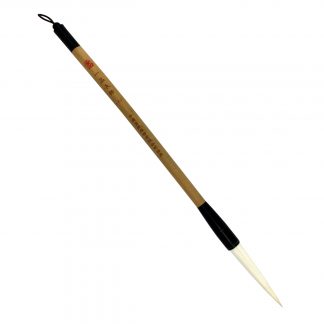
Brand: Red Star 红星
Materials: Bamboo, Wool
Recommend to: Advanced Level, Medium Level, Professionals
Suitable for: Birds, Calligraphy, 花鸟画 Flower and Bird painting, 草书 CaoShu "grass" Cursive Script calligraphy
Brush Hair Size: 6.8 * 1.1 cm
Product Size: 32 × 1.1 × 1.1 cm
Shipping size: 35 × 5 × 5 cm
Shipping weight: 50 g


Red Star 一品长锋 Extra Fine Chang Feng Wool Calligraphy and Painting Brush L
$36.20 (USD) Add -
Red Star 七紫三羊 Lux Zi Hao “7 Rabbit 3 Goat” Brush


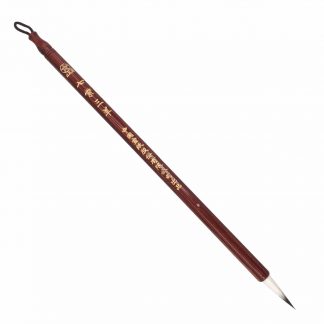
Brand: Red Star 红星
Materials: Wood, Wool, 紫毫 Zi Hao Rabbit hair
Recommend to: Advanced Level, Beginners, Medium Level, Professionals
Suitable for: Birds, Calligraphy, Chinese Painting, Portrait, 写意画 Freehand Painting, 小品画 Small Scale Painting, 工笔画 Gongbi Painting, 楷书 KaiShu Regular Script calligraphy, 花鸟画 Flower and Bird painting, 草书 CaoShu "grass" Cursive Script calligraphy
Brush Hair Size: 2.8 * 0.6 cm
Product Size: 23 × 0.8 × 0.8 cm
Product Weight: 13
Shipping size: 35 × 5 × 5 cm


Red Star 七紫三羊 Lux Zi Hao “7 Rabbit 3 Goat” Brush
$45.24 (USD) Add -
Red Star 京抓 Pro Jing Zhua Yang Hao Wool Brush Set


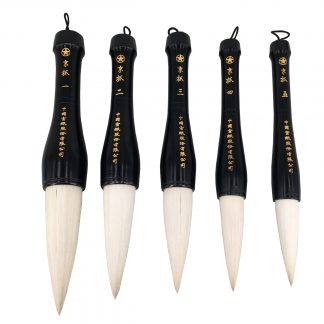
$243.33$231.16
Brand: Red Star 红星
Materials: Solid Black Wood, Wool
Recommend to: Advanced Level, Beginners, Medium Level, Professionals
Suitable for: Large Cursive Calligraphy, Large Leaves/Trees, 山水画 ShanShui Landscape Painting
Brush Hair Size: 2 * 8 cm, 2.2 * 8.5 cm, 2.8 * 9.5 cm, 3 * 10 cm, 3.5 * 11 cm
Shipping size: 145 × 25 × 25 cm
Shipping weight: 1100 g


Red Star 京抓 Pro Jing Zhua Yang Hao Wool Brush Set
-5%$243.33$231.16 Add to cart -
Red Star 京抓(一) Pro Jing Zhua Yang Hao Wool Brush XXXL


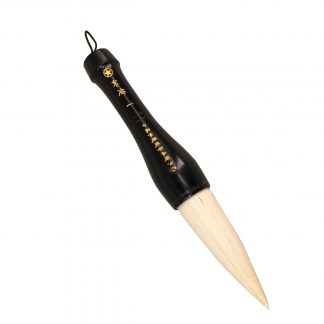
Brand: Red Star 红星
Materials: Solid Black Wood, Wool
Recommend to: Advanced Level, Professionals
Suitable for: Large Cursive Calligraphy, Large Leaves/Trees, 山水画 ShanShui Landscape Painting
Brush Hair Size: 3.5 * 11 cm
Product Size: 29 × 5 × 5 cm
Product Weight: 155
Shipping size: 29 × 5 × 5 cm


Red Star 京抓(一) Pro Jing Zhua Yang Hao Wool Brush XXXL
$74.93 (USD) Add
Books
-
Chieh Tzu Yuan Manual of the Mustard Seed Garden 芥子园画传 Set of 4 Volumes


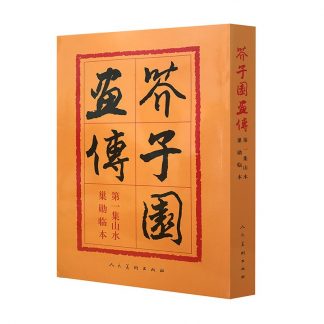
Brand: inkston
Product Weight: ,,,
Shipping size: 98 × 68.6 × 11.8 cm


Chieh Tzu Yuan Manual of the Mustard Seed Garden 芥子园画传 Set of 4 Volumes
$66.10 Add to cart -
Chieh Tzu Yuan Manual of the Mustard Seed Garden 芥子园画传 single book



Brand: inkston


Chieh Tzu Yuan Manual of the Mustard Seed Garden 芥子园画传 single book
$13.80 – $19.25 Choose -
Song Dynasty Flowers and Birds Painting Album


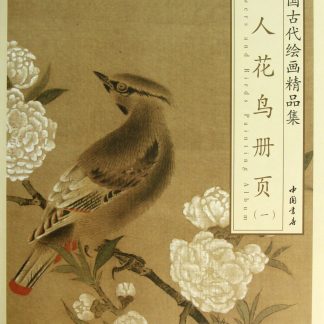
Brand: inkston
Shipping size: 37.2 × 18 × 0.8 cm
Shipping weight: 240 g


Song Dynasty Flowers and Birds Painting Album
$12.86 (USD) Add -
于非闇 Yu Fei An Flowers and Birds Gongbi Painting Album


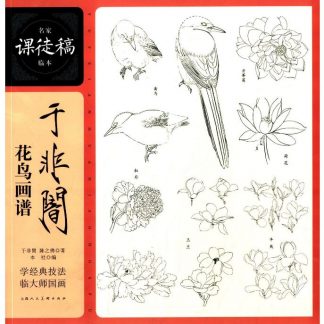
Brand: inkston
Suitable for: 工笔画 Gongbi Painting
Product Size: 28 × 26.8 × 1.2 cm
Product Weight: 318


于非闇 Yu Fei An Flowers and Birds Gongbi Painting Album
$23.83 (USD) Add -
华喦 Hua Yan Flowrs and Birds Painting Album


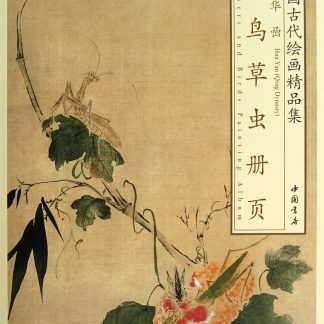
Brand: inkston
Shipping size: 37.2 × 25.8 × 0.6 cm
Shipping weight: 240 g


华喦 Hua Yan Flowrs and Birds Painting Album
$11.28 (USD) Add -
恽寿平 Yun Shou Ping Landscape Flowers and Birds Painting Album


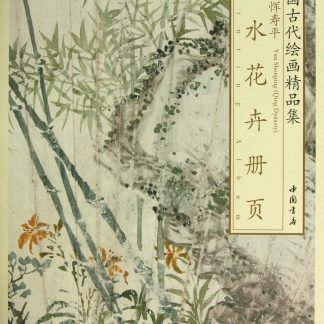
Brand: inkston
Suitable for: 花鸟画 Flower and Bird painting
Shipping size: 37.2 × 26.8 × 0.6 cm
Shipping weight: 240 g


恽寿平 Yun Shou Ping Landscape Flowers and Birds Painting Album
$14.16 (USD) Add -
江寒汀 Jiang HanTing Flower & Bird Album


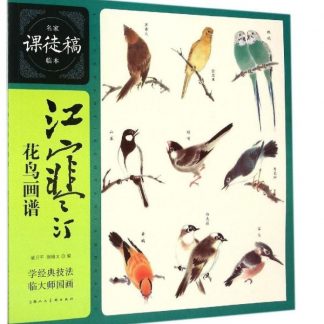
Brand: inkston
Recommend to: Advanced Level, Beginners, Medium Level
Suitable for: Chinese Painting
Product Size: 28 × 27.2 × 0.8 cm
Product Weight: 281


江寒汀 Jiang HanTing Flower & Bird Album
$20.49 (USD) Add -
黄宾虹 Huang Bin Hong Album of Flowers and Birds Painting


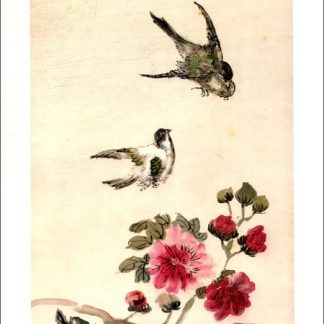
Brand: inkston
Shipping size: 43.2 × 31.2 × 1.6 cm
Shipping weight: 839 g


黄宾虹 Huang Bin Hong Album of Flowers and Birds Painting
$30.65 (USD) Add
Nice Bird Designs
-
Silk Embroidery Cushion Cover


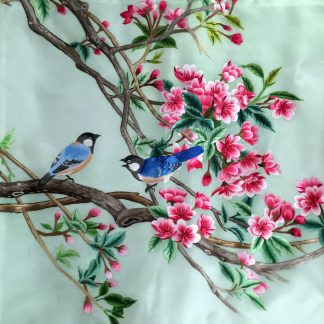
Brand: inkston


Silk Embroidery Cushion Cover
Sale! $141.34 (USD) Add
